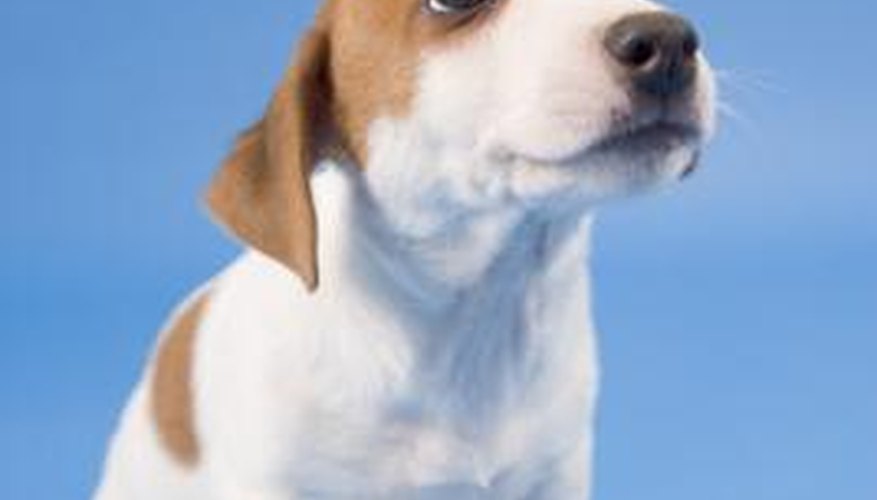Very young puppies have no control over their bodily functions and rely on their mothers to keep them clean. Even older puppies can need a hand with cleaning up afterward if they eat something they shouldn't or if you change their diet suddenly. Longhair breeds tend to have more problems with messy bottoms, because the poop sticks to the hair around the puppy's tail.
- Very young puppies have no control over their bodily functions and rely on their mothers to keep them clean.
- Even older puppies can need a hand with cleaning up afterward if they eat something they shouldn't or if you change their diet suddenly.
Put on your plastic gloves.
Fill a large bowl or tub with a few inches of warm water. The water should be just slightly warm to the touch, not hot or cold.
Lay a bath towel or old throw rug down on the floor near the tub. The towel or rug will keep the floor from getting wet, and give the puppy something to grip with its claws.
Place the puppy in the tub; hold its bottom under the water for a minute or two to loosen up the dried poop.
Allow the puppy to stand up, then wipe off any remaining poop with a rag.
Lift the puppy out of the tub and place it on the towel or rug.
Dry the puppy off with the towel, then finish with a hair dryer set to low heat.
Wash your hands with hot, soapy water to eliminate any germs. Puppies can carry intestinal parasites, such as worms and bacteria, that can transmit to humans.
TIP
If the puppy is squirmy when drying it off, try wrapping the puppy in the towel with the head poking out one end. This keeps the puppy restrained while the towel soaks up the water from the puppy's coat. If you have a longhair puppy, try trimming some of the hair on the puppy's rear with a pair of blunt-tipped scissors.
WARNING
Dried poop can be a sign of diarrhoea and other gastrointestinal health problems. Have your puppy examined by a veterinarian if the problem persists.
